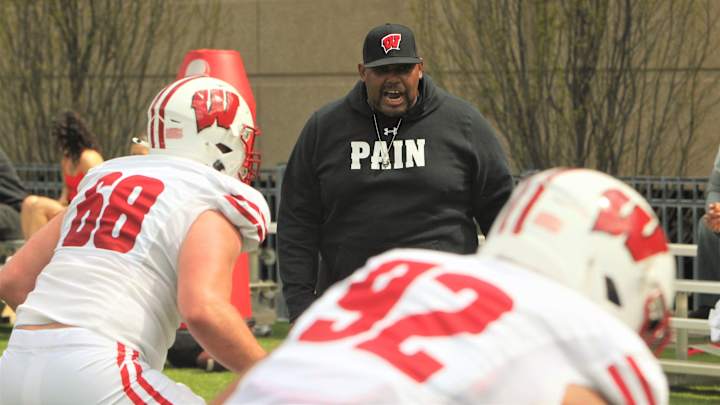The Wisconsin Badgers’ defensive line for the 2025 season presents one of the most imposing collections of size and strength in recent program history. Following a winter and spring dedicated to recruiting and player development, Wisconsin’s defensive front is poised to dominate the line of scrimmage with added bulk, length, and physical tools that have the potential to transform the Badgers into a top-tier defensive unit.
At the heart of this transformation is the presence of multiple defensive tackles and ends who now tip the scale well above the traditional weights for the position. Several returning linemen went through focused offseason strength programs that boosted their mass significantly—players who were once listed at 290–300 pounds are now firmly in the 310–320 range, blending improved power with still-impressive mobility. This additional bulk allows them to anchor more effectively against double teams, collapse interior gaps, and create push in the trenches.
Meanwhile, the Badgers have added key transfers and freshmen whose frames epitomize length and leverage. Newcomers arriving in fall classes stand at 6-foot-4 to 6-foot-6, with weights between 305 and 325 pounds. Their combination of arm length, punch, and raw strength gives Wisconsin a real physical advantage, especially in passing downs and short-yardage situations. Along the defensive front, this level of size now means opponents must scheme differently just to get the ball snapped—not to mention running into a sea of brick walls.
Perhaps most intriguing is how the coaching staff is maximizing that bulk. Strength and conditioning leaders worked closely with the players on functional strength—not simply piling on weight, but ensuring added mass sustains endurance and flexibility. Dropping fat percentages while increasing lean muscle gives these linemen explosive burst and repetitive stamina, crucial for an up-tempo Big Ten grind. So while several linemen put on 15–20 pounds since last season, they haven’t sacrificed lateral agility or pad level control.
Wisconsin’s positional versatility also improved thanks to the added size. Linemen capable of sliding between the 3‑technique and 5‑technique across the defensive front give defensive coordinator more flexibility in rotational packages. Rather than relying on undersized tackles on early downs and rotating in fresh bodies, the Badgers can deploy their power throughout the entirety of a game, improving consistency and reducing fatigue. Depth across the board means they can rotate almost hourly without compromising physical presence.
One of the most notable developmental successes has been one returning sophomore who entered 2024 at 285 pounds and is now a rock-solid 315. He has added functional leg strength and refined his hand technique through spring and early summer drills. That progression—gaining weight, adding strength, and improving technique—embodies the broader trend across the line. When the pads come on in fall camp, Wisconsin’s defensive tackles will look markedly different—thicker through the core, broader in the frame, and tougher to dislodge.
What that means for opposing offenses: run games will be challenged at multiple levels, as the Badgers’ big interior tackles plug gaps and force backs laterally, while lengthier ends chase containment. The combination of size and power also enhances Wisconsin’s pass rush—not in flashy sack numbers, necessarily, but in consistent quarterback disruption. Even without ultra‑quick edge speed, a wide-bodied end with long arms and good leverage can wipe out throwing lanes, flush quarterbacks, or collapse pockets.
Over a full season schedule of grind‑it‑out Big Ten matchups, Missouri‑like power‑run sets, and fast‑tempo spread attacks, Wisconsin’s beefed‑up front should help control time of possession and slow opponents. It establishes the Badgers’ identity: a bruising, physical unit up front that refuses to be moved. More than just numbers on a roster, the added size reflects intentional development—wisdom that size alone isn’t enough, but size with strength, length, and technique becomes a formidable force.
In short, for 2025, the Wisconsin Badgers’ defensive line is no longer merely a position group—it’s a statement of identity. With added mass, functional power, positional versatility, and refined technique, they’ve built a formidable front that can dominate run lanes, disrupt passing games, and define the Badger defense for the season ahead.








